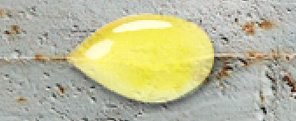 |
|||||||
|
Any system that circulates fluids eventually develops leaks. Making matters worse, these leaks can occur rather insidiously and may damage equipment before you realize there's a leakage issue. The 5 Problems of Undetected Leaks Though machinery wear and tear during operation can result in small internal system leaks, system leakage often does not become evident until symptoms show up externally. So detection is the first line of defense in leak control. Once detected, however, quick action should be taken to pinpoint the location(s) of fluid loss, and the amount of fluid involved. Pinpointing the amount of fluid loss is where your reservoir management records come in, so be sure to keep them up-to-date and available to all who need them. How Leak Dyes Work After a time, wherever there is a leak, the oil leak dye will accumulate and glow an iridescent color (the colors vary with different manufacturers) when illuminated under a UV light. This method detects even pinhole leaks, offering irrefutable evidence of a problem. Once corrected, the observed leak sites can be sprayed with a different chemical that neutralizes the UV sensitivity of the oil leak dye and signifies that the leak has been repaired. In case you are prone to procrastinate on leak repair, be mindful that for heavily used equipment a drop of oil lost every 10 seconds adds up to about 80 gallons -- a drum and a half -- of fluid annually. As the old adage says, 'Time is money.'
|

|
||||||
|
|||||||
|
|||||||
Accurate Lubricants & Metalworking Fluids, Inc.• 403 Homestead Avenue; Dayton, Ohio 45417 USA • Phone: 937-461-9906 Fax: 937-461-9917
|
|||||||
